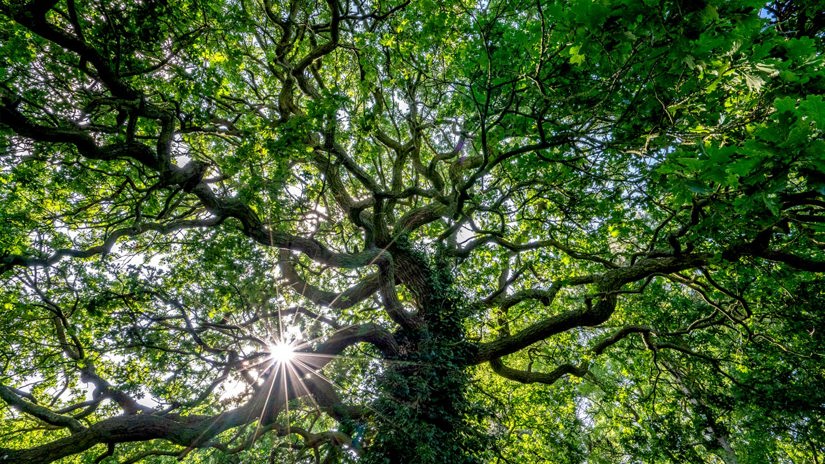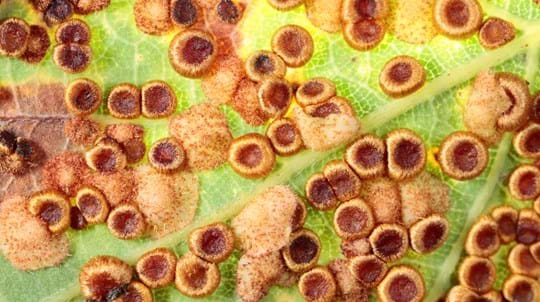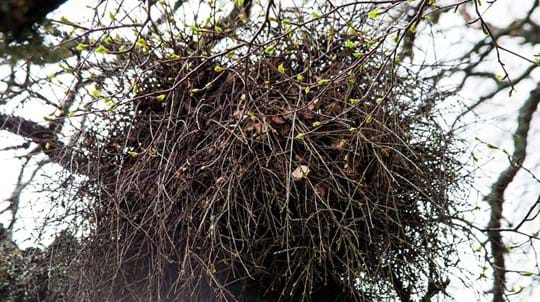
Find a wood near you
Search thousands of woods across the UK and gather information on the local facilities, features, wildlife and history in the area.
Find a wood
Digital content editor
If you go down to the woods today, you may stumble across a stump. A stump that can provide you with an insight into the life history of the tree, once hidden within the barked walls of its trunk. Discover what's inside a tree's trunk and what we can learn from it, including the tree's age and past weather events.
The life of a tree starts as a result of self-seeding or planting. Throughout its life, a tree may be managed in a way that enables it to thrive and provide ecosystem services. Sometimes, it is necessary to thin out woodland by felling selected trees as part of a management strategy. Stumps are often a remnant of trees selected for removal, and can give a good insight into the past, that may not be apparent in a tree that has fallen naturally.
You're probably familiar with the 'normal' configuration of tree rings within a trunk. These concentric growth rings are formed as the tree grows by creating a new layer of cells.
During each season a tree grows vertically at the root and shoot tips (primary growth), and also laterally. It is this lateral, or secondary growth, that causes the thickening of the stems, branches and trunk, and the creation of a new ring internally - a ring that marks one cycle of seasons, or one year.
The way these rings form in relation to the rest of a tree's internal structure can often be very telling of the journey the tree has made.
Not all trees are symmetrical. Depending on the conditions, the heartwood is not always central. More on this later...
The tree trunk is made up of the following parts.
This is the central part of the tree. The pith is located at the core of this section and would have been present in the tree from the start. The heartwood, which is usually dark in colour, surrounds the pith and is formed when the sapwood becomes inactive. The heartwood:
This is the lighter coloured part of the trunk surrounding the heartwood. It is made up of active xylem - tube-like cells responsible for transporting water and soluble nutrients.
This is a ring of growth tissue that sits in between the sapwood and the inner bark. It is responsible for the creation of xylem (in the sapwood) and phloem (in the inner bark). Phloem cells are responsible for transporting sap containing sugar around the tree and to the roots.
It is the creation of cells in the sapwood which leads to the creation of distinctive light and dark rings. The light ring is the result of rapid sugar-fuelled growth, which occurs in the warmer months. Towards the end of the growing season, in late summer, the cells are much smaller and form the darker part of the ring.
This is one of the outer layers of the tree. It is the region that contains phloem cells. It is very important that this part of the tree isn't damaged, as sugar is integral to energy release and growth.
This is the outermost layer that can act as an identifying feature for different species. It is the main protective layer for the tree (much like our skin). It can be thick or thin and may have visible raised 'breathing' pores that 'breathe' in oxygen.
In some specimens, it is possible to see rays coming out from the centre of the stump, like spokes on a bicycle wheel. They connect the pith to the outer layers of the tree.
Trees grow in a way that reflects environmental conditions.
The heartwood can sometimes appear on one side of the stump. This can happen when a tree is leaning to one side and it lays down growth to right itself, so it doesn't become heavy on one side and topple over.
Equally, trees subjected to high winds may grow in this way, with much more growth occurring on the side facing less resistance.
In ideal conditions, a tree would be capable of using the maximum amount of sunlight to make food, and therefore able to put on a healthy amount of growth - much like we do when we maintain a healthy diet. The rings would be the expected thickness in relation to the species and the age of the tree.
It would mean that the tree had no notable pests, diseases or destructive events and was exposed to ideal:
In less than ideal circumstances, a tree may not be able to photosynthesise at full capacity, and so rings may appear thinner. Likewise, the loss of a limb may cause an inward dimple in the ring.
Sometimes you might come across tree rings that do not look as you'd expect. Indeed, they break the convention of the clear tree ring structure entirely.
If you have never come across this before, the lines (also called zone lines) can appear distinct and are sometimes accompanied by wider black staining throughout the wood.
This discolouration is the result of the heartwood being decayed by fungi as they exploit the tree for nutrients, and occur in dead trees, or living trees under stress.
The lines can remain visible for longer than the structure of the surrounding wood as it decays. This can make the timber worthless for timber merchants but is good news for woodworkers. Guitar makers, furniture makers, and craftspeople use these black lines or 'spalting' to give character to their creations.
Trees have indelible marks that can be read.
As you can see trees can be very good historical records of past events. Some of the oldest trees are around 5,000 years old! Within the trunk of a tree of that age is a wealth of information that can be carefully investigated by experts.
Dendrochronology is the professional study of a tree over time and is achieved by taking core samples from the tree trunk. The sample is a cylindrical section of the tree, which is extracted with a bore using a method that causes little or no damage. The cylindrical extract allows researchers to study annual growth rings.
Dendroclimatology takes the study of tree age one step further and involves the study of growth rings in relation to past climate events. The variation in annual rings can tell experts a lot about the environmental conditions throughout the life of a tree.
If you go down to the woods today, you may stumble across a stump.
Next time you come across a stump or a stack of felled trees, have a look at the sawn trunks to see if you can spot anything interesting!

Search thousands of woods across the UK and gather information on the local facilities, features, wildlife and history in the area.
Find a woodBlog
Emilie Bonnevay • 15 Jul 2019

Blog
Emilie Bonnevay • 27 Jun 2019

Blog
Emilie Bonnevay • 31 Jul 2018

Blog
Annabel Kemp • 12 Nov 2024